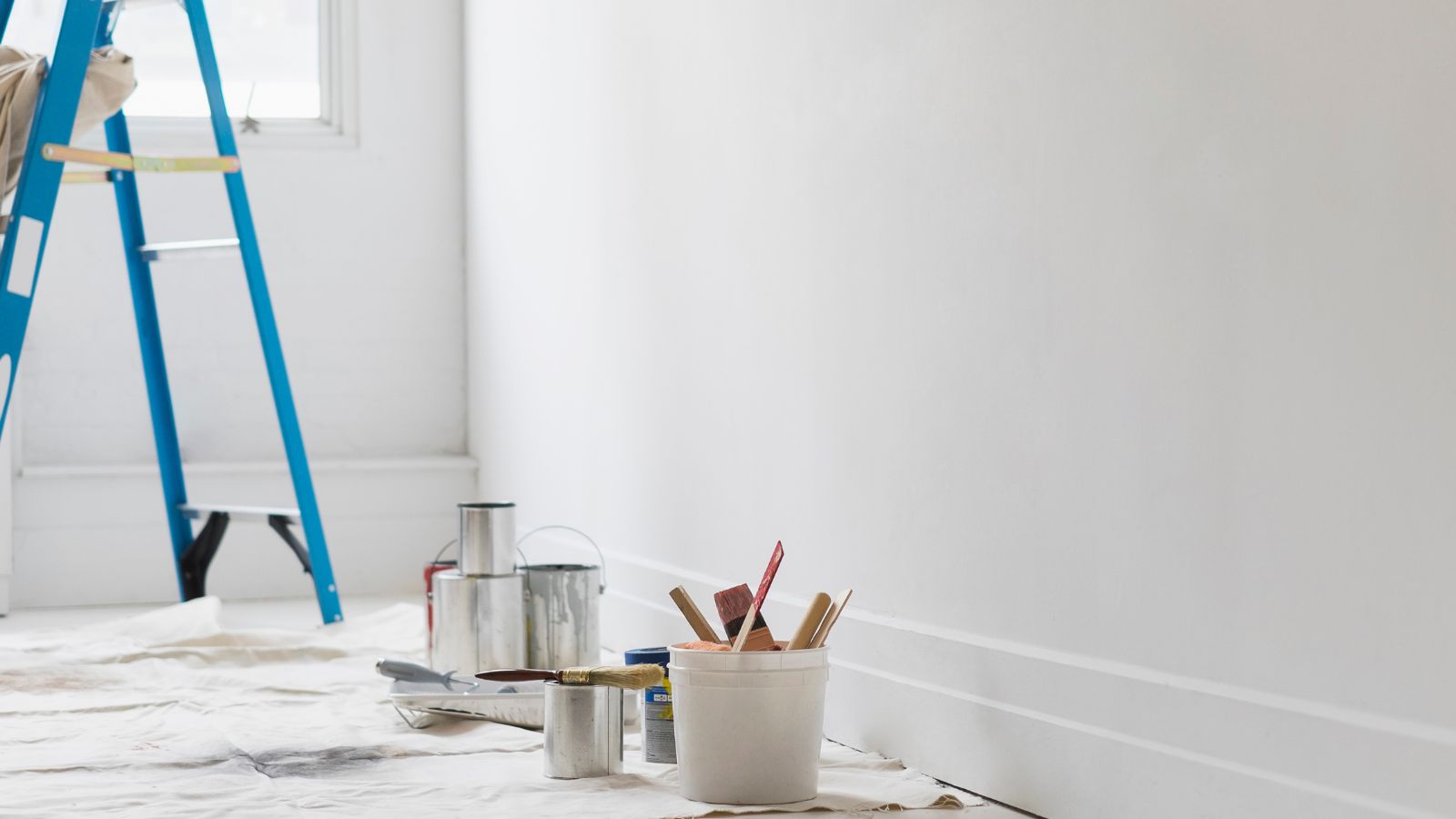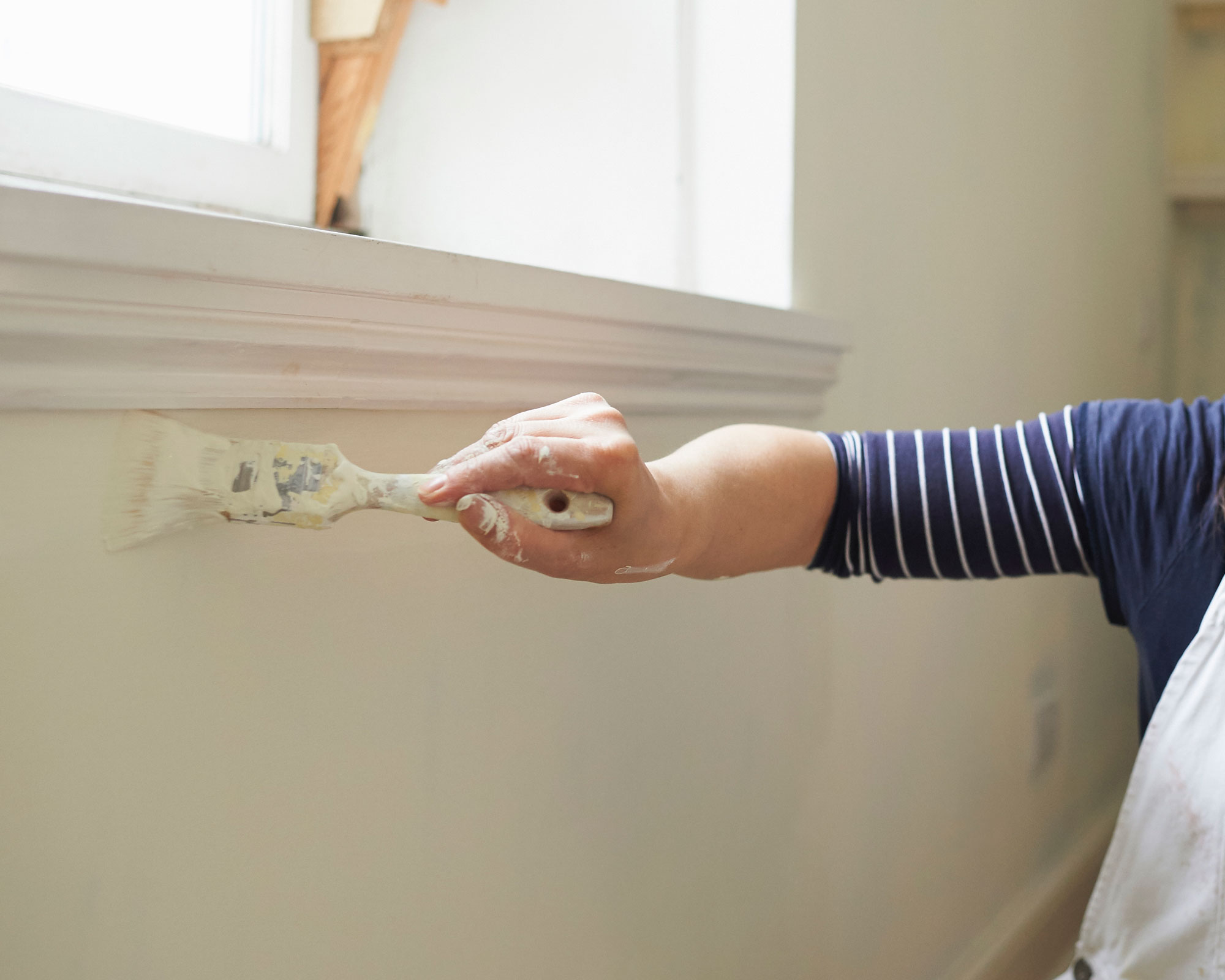
If you are taking on the task of decorating, then you may be wondering if you should paint trim or walls first for a smooth painting process and professional finish.
We know that painting a room for the first time is a learning process, but one element of it is clear: getting the order right for painting trim, painting a ceiling, and painting walls will not only give you a smart result, but save time and effort, too.
In short: the answer is to paint trim first. Here's how to approach the job, step by step.
Why paint trim first

The general consensus among professional home decorators is that any home painting project should begin with finding the best paint finishes for trim and painting the trim first.
‘We almost always paint the trim before we paint the walls. This is because we use the tape and caulk method to get perfectly straight lines where the wall and trim meet,’ shares Matt Stone, professional painter and owner of Hometown Painting. ‘It is simply easier to put the tape on the trim than on the wall so we must paint it first.’
The three benefits of painting your trim before your walls, according to Julio Arco, architect, designer, and founder of Bark and Chase?
1. Getting cleaner lines between your two surfaces. ‘Since the trim is narrower than the walls, it's more challenging to maintain a steady hand while painting,’ he says. ‘By painting the trim first, you can focus on achieving a precise finish without worrying about accidentally getting paint on the walls.’
2. Trim is much easier to touch up than walls, should paint splash down when painting with a roller.
3. A fully dry trim is easier to tape over than a freshly painted wall, so there will be less chance of paint peeling when you remove painter's tape.
How to finish by painting walls

Once your trim has thoroughly dried, you have painted your ceiling if needed, and you have prepared walls for painting, then you can move on to finishing your paint job.
1. Apply high-quality painter's tape such as FrogTape, available at Amazon, to the dried baseboards and picture rails where the trim meets the wall.
2. Apply caulk. ‘We apply a thin layer of caulk to the edge of the tape where the line will be between the wall and trim,’ reveals Matt Stone, professional painter. ‘This will seal the tape so no wall paint can get underneath. Make sure to run your finger or a damp rag over the caulk to push out any excess. You really only want a tiny bit to seal the edge of the tape.’
3. Address imperfections. ‘If needed, touch up any areas where the wall paint has bled onto the trim with a small brush and the trim paint when everything has dried. Inspect the entire room for any uneven coverage or imperfections, and address them as necessary,’ recommends Julio Arco, architect, and interior designer.
FAQs
Should you paint walls and trim with the same paint?
While you can paint your walls and trim the same color, you should not use the same type of paint finish for the two. Trims such as window frames and baseboards are there to protect the lower part of the wall from knocks and scuffs as well as look pretty, so should be painted in a tougher paint finish, such as gloss paint, while walls might be coated in matte paint.
How do you avoid brush marks when painting trim?
We often paint trim with high-viscosity paints such as gloss which is susceptible to holding brush marks. To help prevent brush strokes from drying into your paint, paint in one direction rather than passing back and forth, don't press too hard with the brush, dampen the brush before painting, and avoid passing back over paint that has already started to dry or turn tacky.
Do you let the area you have cut in dry before rolling?
When painting a wall, it is best to not let cut in dry before using rollers to fill in the rest of the wall. Allowing it to dry could cause the edges to flake as you roll over them again, resulting in a patchy or uneven paint job.
Painting your trims first can help to make the painting process smoother as it is easier to cover and tape up dried trim paint than it is to tape walls. Making sure to paint your room in the correct order will save you time and a lot of frustration in the long run.







